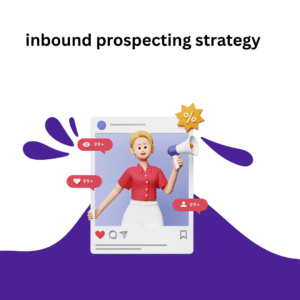Old ways often felt pushy. Imagine someone trying to sell you something you don’t need. That’s outbound. Inbound is the opposite. It pulls people in. It’s about being useful and interesting. We share knowledge. We solve problems. This builds trust over time. When trust is built, people are more likely to buy. It’s a gentle, effective way to find new business.
We will explore how this works. We will look at each step carefully. You will see how to make it successful. This article will break down the process. We will cover many simple steps. Learning these steps will help you understand. It will make sense for your business. Let’s start this exciting journey together now Finding New Customers.
Why Inbound Prospecting Rocks! Finding New Customers
Inbound prospecting is great for many reasons. Firstly, it saves time and money. Think about it. You are not spending hours calling people. You are not buying expensive lists. Instead, you are creating content once. This content works for you.This is much more efficient for your business. It is a smart use of resources.
Secondly, the leads you get are better. These people already showed interest. They read your list to data articles. This means they are warmer prospects. They are more likely to buy. This leads to higher sales numbers. It also means less wasted effort. You talk to people who want to listen.
Furthermore, it builds a good reputation. When you provide value, people see you as an expert. They trust your advice. This makes them loyal customers. They might even tell their friends. Word-of-mouth is powerful. It creates a positive cycle. More trust means more customers. This is good for long-term growth.
Getting Started with Helpful Content
The very first step is making good content. This content needs to be helpful. It should answer common questions. What do your potential customers struggle with? What problems do they need solved? Think about these things. Then, create articles or videos. Make them easy to understand. Your content is your magnet. It pulls people towards you.
Consider your audience. Who are you trying to reach? What do they care about? Talk in their language. Use simple words. Avoid jargon. Imagine building your audience with squarespace email lists explaining it to a friend. Make it engaging. Add pictures or diagrams. The goal is to be useful. The goal is to provide real value. This is how you start building trust.
This content can be many things. It could be blog posts. It could be how-to guides. Maybe short videos work well. Perhaps even a simple checklist. The important thing is quality. Make sure it is accurate. Make sure it is easy to find. This helpful content is the foundation of inbound.
Keywords: The Search Engine Bridge
Keywords are very important. Think of them as bridges. They connect people searching online to your content. When someone types a question into Google, they use keywords. We want our content to show up for those keywords. This means we need to use the right words. We need to find out what words people are using.
There are tools to help with this. These tools show popular search terms. They tell you how many people search for certain words. We pick mobile lead keywords related to our business.
Do not stuff too many keywords. This can make your content sound unnatural. It can also hurt your search ranking. Always write for humans first. Make sure your sentences flow well. Keywords should fit naturally. They are there to help people find you.
Attracting Visitors: Spreading the Word

Once you have great content, you need to share it. People won’t know about it otherwise. Social media is a good place to start. Share your articles on Facebook, LinkedIn, or Instagram. Pick platforms where your audience spends time. Make sure your posts are inviting. Use a catchy title. Ask a question.
Build an email list. Send out newsletters. Highlight your new content. Give people a reason to click. Offer exclusive tips. Make your emails valuable. This keeps people engaged. It brings them back to your website. It strengthens your connection with them.
You can also try online communities. Join groups related to your industry. Share your expertise. Answer questions. When appropriate, link to your content. Be helpful, not pushy. The goal is to be seen as a resource. This helps people discover your valuable information.
Turning Visitors into Leads: The Next Step
We need to turn them into leads. A lead is someone interested in your products. This means getting their contact information. We do this by offering something extra. It’s usually something valuable. It could be a free guide. Maybe an exclusive webinar.
This “something extra” is called a lead magnet. It’s a piece of content. It solves a specific problem. People give their email address to get it. This is a fair exchange. They get something useful. You get their contact information.
Make it easy to sign up. Use clear forms on your website. Tell people what they will get. Reassure them their information is safe. This makes them feel comfortable. Once you have their email, you can nurture them. You can send them more helpful information over time. This builds trust. It moves them closer to buying.
